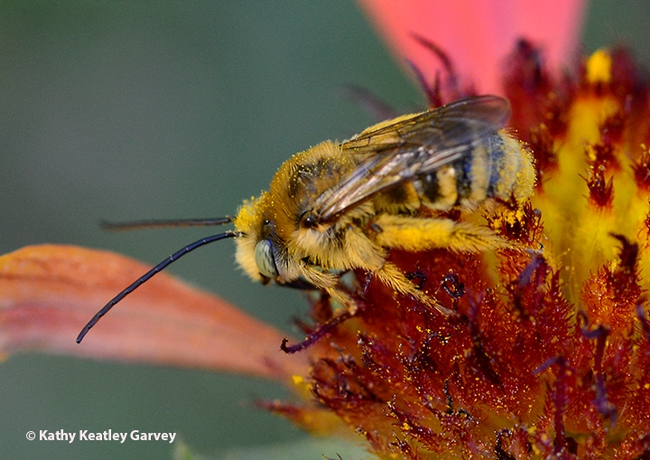It's nicknamed "the sunflower bee" for good reason.
It forages on sunflowers.
We recently spotted a longhorned bee, Svastra obliqua, also called "the sunflower bee," on Gaillardia, aka blanket flower, a member of the sunflower family, Asteracease.
Asteraceae is comprised of more than 32,000 known species of flowering plants. And Svastra? Fourteen different species occur in North America and seven in California, according to the UC Berkeley Urban Bee Lab, which provides this description:
"Overall they are medium to large, with stout bodies, gray hair on their thorax, and irregular striping on their abdomen. Females can be distinguished by their scopae, which are located on their hind legs. They additionally are larger compared to males and have dark faces. Males have yellow markings on the bottom section of their faces and are typically more elongate in body size. Both male and female bees have long antennae. Svastra sp. look very similar to Melissodes without using a microscope. However, Svastra sp. will have longer antennae than both Anthophora and Diadasia so the difference is more noticeable."
Those long antennae...those eyes...those mesmerizing eyes...
You can read more about California's native bees in California Bees and Blooms: a Guide for Gardeners and Naturalists, a book authored by the University of California team of Gordon Frankie, Robbin Thorp, Rollin Coville and Barbara Ertter. All are affiliated with UC Berkeley. Thorp, who received his doctorate in entomology from UC Berkeley, was a member of the UC Davis entomology faculty for 30 years, from 1964-1994. He achieved emeritus status in 1994 but continued his research, teaching and public service until a few weeks before his death on June 7, 2019.
Attached Images:
